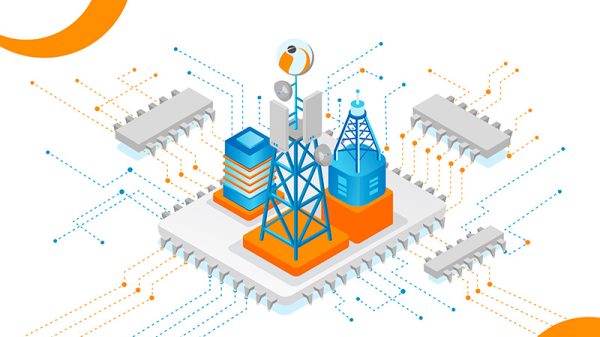The Internet of Things (IoT) has woven itself into the fabric of our daily lives, influencing everything from how we manage home security to optimizing our health routines. In the realm of education, IoT’s impact has started to make significant waves, transforming traditional teaching methods and learning environments. As we delve into the role of IoT within educational settings, it is crucial to explore not only the potential it offers but also the necessities and implications of extending these technologies into students’ homes. This exploration is particularly timely, considering the recent shifts toward more digital and remote learning environments across the globe.
The Evolution of Educational Technologies
The journey of technology in education has been marked by continuous innovation, starting from the simple blackboards of the 1800s to the advanced digital tablets and virtual learning environments we see today. Each leap in technological advancement has aimed to enhance educational delivery and accessibility. Notably, recent global events, such as the COVID-19 pandemic, have accelerated the adoption of remote and hybrid learning models, pushing schools and institutions to adopt more flexible and interactive technologies.
In this context, IoT devices have begun to play a central role in classrooms and laboratories, with smartboards that can sync with teacher and student devices, sensors that can gather and analyze real-time data for science experiments, and even attendance systems that can automatically update student logs. These advancements are not just modernizing teaching tools but are also reshaping the educational landscape to be more inclusive, efficient, and engaging.
For those looking to improve their academic performance or streamline their study processes, a term paper writer service can complement these technological advances by providing tailored writing assistance, ensuring students maximize their educational outcomes.
Benefits of IoT in Education
The integration of IoT technologies in education brings multiple, significant benefits that enhance both teaching and learning experiences.
Interactive Learning
First, IoT enables interactive learning environments that can adapt to the needs of individual students. For instance, smart devices can use algorithms to modify lessons based on a student’s pace and learning style, promoting a more personalized education. According to a study by the Center for Digital Education, schools that utilize IoT technologies have seen a 20% improvement in student engagement and comprehension rates.
Accessibility
It is another crucial benefit. IoT devices such as voice-assisted technology and smart braille readers help students with disabilities by providing them with more independent learning opportunities and access to the same resources as their peers. A report by the American Institutes for Research highlights that technology-assisted learning significantly reduces barriers for over 6.5 million students with disabilities in the U.S.
Customization
IoT enables the customization of educational content, allowing for a tailored educational experience that can adjust to different learning speeds and preferences. This customization not only aids in maintaining students’ interest but also in improving their academic performance by focusing on areas that require additional attention.
The Case for IoT at Home
The extension of IoT from classrooms to home environments can create a seamless continuity in learning, which is crucial for comprehensive education today. IoT devices at home enable students to continue their learning with the same tools and methods they use at school. For instance, smart home devices can help schedule homework, manage project deadlines, and even remind students of upcoming tests, mimicking the supportive environment they have at school.
Real-time Access to Educational Resources
It is another significant advantage. With IoT devices, students can instantly connect to cloud-based educational platforms where textbooks, tutorials, and supplementary materials are readily available. This connectivity ensures that learning doesn’t have to pause when the school day ends. According to a survey by Education Week, over 70% of teachers believe that students who regularly use technology are more likely to take advantage of online learning resources at home, fostering better study habits.
Parental Involvement
It is facilitated through IoT as well, allowing parents to monitor their child’s academic progress more closely. Devices can provide updates on student performance and alert parents to missed assignments or areas where their child may need extra help, bridging communication gaps between parents and schools.
Challenges and Considerations
While the benefits of IoT in education are substantial, there are significant challenges and considerations that must be addressed to ensure its effective and safe implementation.
Privacy and Security
They are paramount concerns. IoT devices collect vast amounts of data, and without stringent security measures, this data is vulnerable to breaches. According to a report by the Internet Society, over 60% of IoT devices are at risk of severe security vulnerabilities, including unauthorized access to personal information.
Equity and Access
Another critical issue is equity and access. The deployment of IoT in education requires that all students have access to necessary technologies at home, which is not always the case. A study by the National Center for Education Statistics found that approximately 14% of children had insufficient internet access at home, highlighting a significant digital divide. Ensuring that every student benefits from IoT technology entails addressing these disparities, potentially through government and community initiatives to provide the required devices and connectivity.
Over-Reliance on Technology
Furthermore, there’s a risk of developing an over-reliance on technology. While IoT can greatly enhance learning, it’s essential to maintain a balance to ensure that students also develop critical thinking and problem-solving skills without total dependence on digital tools. The educational curriculum must integrate IoT thoughtfully, ensuring it complements traditional learning methods rather than completely replacing them.
Implementation Strategies
Successfully integrating IoT into students’ homes requires thoughtful planning and strategic implementation.
Technological Infrastructure
The first step is establishing the necessary technological infrastructure. This includes not only ensuring reliable internet connectivity but also equipping students with compatible devices. According to a report by the Consortium for School Networking, schools, and districts must partner with local governments and businesses to provide subsidized broadband services and affordable devices to low-income families, ensuring all students can access home-based IoT solutions.
Partnerships and Funding
They are crucial to overcoming financial and resource-based challenges. Educational institutions can collaborate with technology companies and non-profit organizations to fund and deploy IoT initiatives. For example, initiatives like the ConnectED program launched by the Obama administration have aimed to bring high-speed internet and free digital devices to underserved schools, demonstrating the potential impact of public-private partnerships.
Training and Support
Training and support for teachers, students, and parents are equally important. As per a survey by the National Education Association, over 80% of teachers felt they needed further training to integrate technology effectively into their teaching. Comprehensive training programs must be developed to empower teachers with the skills to use IoT tools effectively, while also providing students and parents with the necessary guidance to utilize these technologies safely and effectively at home.
Case Studies
To illustrate the practical benefits and challenges of IoT in home learning, let’s explore a few case studies:
Case Study 1: Smart Learning Program, South Korea
South Korea’s Smart Learning Initiative launched in 2011 aimed to digitize all school textbooks and create a comprehensive database of educational resources accessible through various IoT devices. By 2015, the initiative reported that students using the system experienced a 30% improvement in reading and math scores. The program included features such as AI tutors and virtual reality simulations that students could access from home, fostering an engaging and continuous learning environment.
Case Study 2: Connect Home USA
This initiative aimed to bridge the digital divide for residents in public housing across the United States. It provided not only free or low-cost internet access but also digital literacy training programs. An impact assessment showed that participating families saw improved educational outcomes for children, particularly in homework completion rates and overall academic performance, as students had better access to online resources and learning tools.
Case Study 3: IoT at Home for Special Needs Education, United Kingdom
In the UK, a pilot project deployed IoT devices tailored for children with special educational needs. Devices included customized tablets with educational apps and games designed specifically for skill development in children with learning disabilities. The project noted marked improvements in children’s engagement and independent learning skills, with parents reporting a 40% increase in their children’s ability to complete tasks independently.
Future Trends
The future of IoT in education promises even more integration and innovative uses, leveraging emerging technologies to further enhance learning environments.
Artificial Intelligence
One key trend is the increased use of artificial intelligence (AI) alongside IoT devices. AI can analyze data collected from IoT devices to tailor educational content more precisely and predict student performance trends, potentially improving outcomes. For example, AI-powered IoT devices can adjust learning schedules and content in real time based on the student’s progress and engagement levels.
Augmented Reality and Virtual Reality
Another emerging trend is the use of augmented reality (AR) and virtual reality (VR) integrated with IoT. These technologies can transform how subjects like history and science are taught, by providing immersive experiences that are not possible in a traditional classroom. For instance, students could take a VR tour of ancient Rome or visualize complex scientific processes in real time. Research by Tech Edvocate suggests that AR and VR in education are expected to increase student engagement by up to 70% and retention rates by 30%.
Internet of Behavioral
Furthermore, there is an increasing focus on the Internet of Behavioral (IoB) technologies, which analyze student behavior data to help in customizing education strategies and improving student outcomes. This could include monitoring attention spans and learning habits to better accommodate individual learning needs.
As we look towards these future developments, it is crucial for educational stakeholders to consider the ethical implications and ensure that these technologies are implemented in ways that are secure, equitable, and beneficial to all students.
Conclusion
As we have explored throughout this article, the integration of IoT in education, extending from classrooms to homes, presents both significant opportunities and challenges. The benefits of IoT—enhanced learning experiences, increased accessibility, and personalized education—are substantial, yet they come with concerns about privacy, security, and equitable access that must be carefully managed. The future of IoT in education is poised for even greater innovation, with advancements like AI, AR, and IoB technologies set to redefine traditional learning environments further.
For stakeholders in education—policymakers, educators, and technology providers—it is essential to collaborate on strategies that maximize the benefits while addressing the potential downsides. Ensuring robust security measures, providing equitable access, and maintaining a balanced approach to technology in education are crucial steps towards a future where all students can benefit from these innovations.
As we continue to navigate this evolving landscape, the goal should remain clear: to leverage IoT to make education more engaging, accessible, and effective for every student, regardless of their background or abilities.
The post Tech Trends Transforming Education: Do Students Need IOT at Home appeared first on IoT Business News.




























